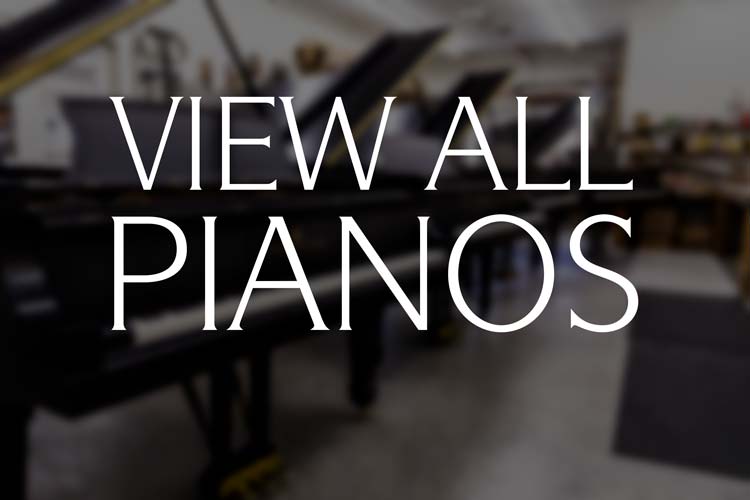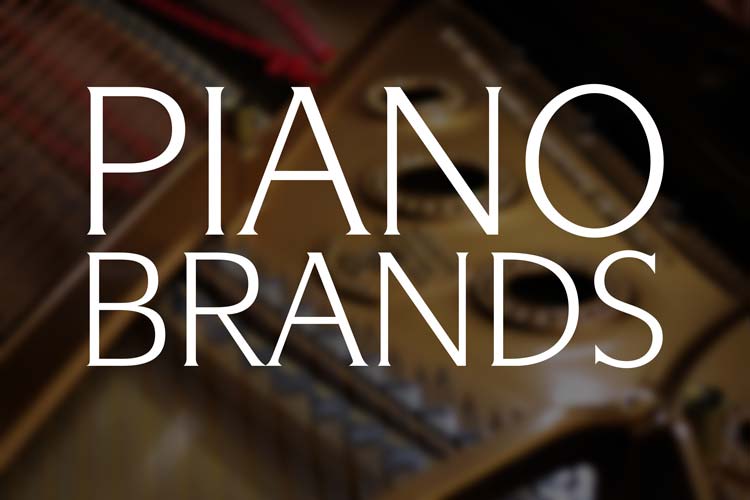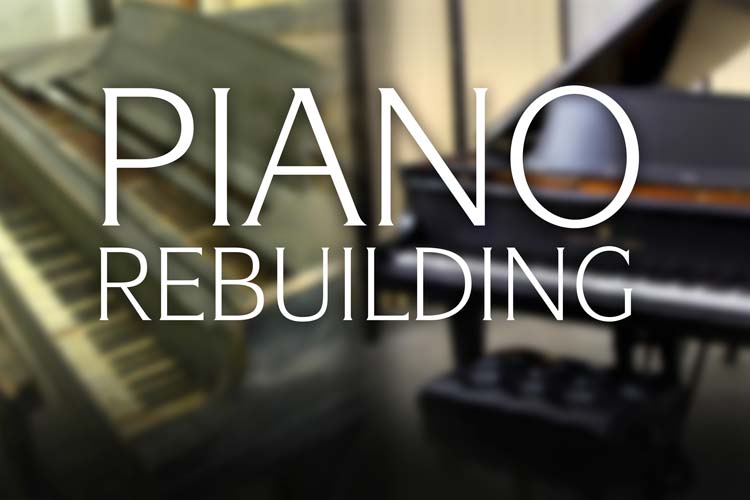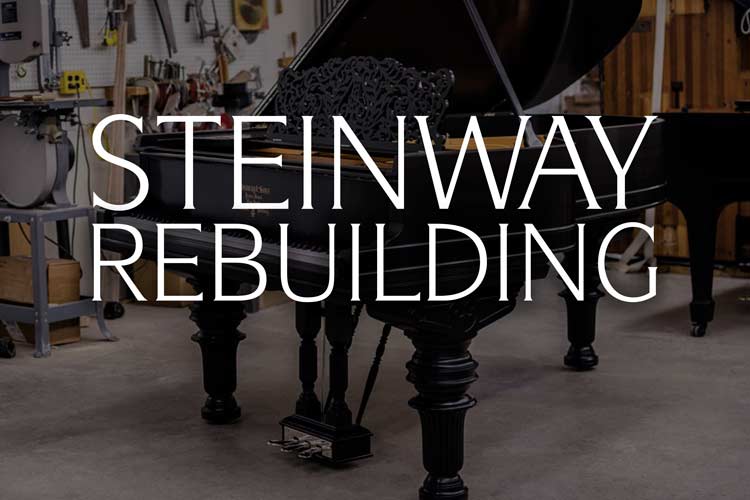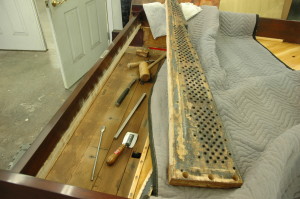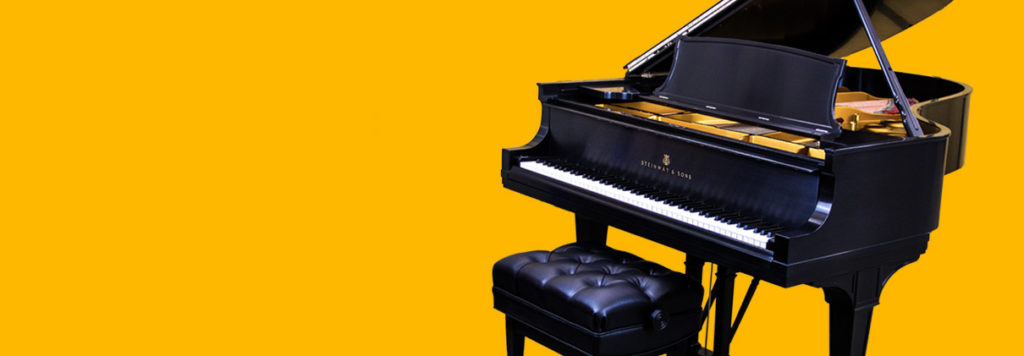
A Basic Overview & What You Need to Know
The grand piano is one of, if not the most distinctive and recognizable instruments in history. Invented in the early 1600s by inventor Bartolomeo Cristofori, the piano has a long and rich history. The mention of a grand piano may conjure up images of a shiny black cabinet and seemingly countless black and white keys. But while the outside is magnificent, the inside is where the heart of the piano truly lies. There are over 12,000 parts in a ‘basic’ Steinway grand piano and the vast majority of them are held in the interior of the cabinet. The piano truly is a modern mechanical marvel! Here is a quick rundown of the basic interior parts of a grand piano.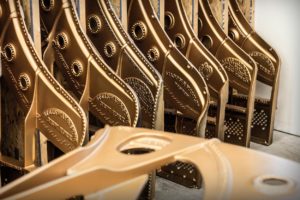 The Cast Iron Plate
The Cast Iron Plate
When lifting the lid and looking inside, the first piano part you probably will notice is the large cast iron plate. Although colors and casting methods vary from manufacturer to manufacturer, the basic function of the plate stays the same. The plate (sometimes called the piano’s harp) serves as the backbone for the piano. The strings are affixed to hitch pins on the plate and the pins in the pinblock, so it must be able to withstand up to 40,000 pounds of tension. The large holes you see on the plate are cooling holes, which allow the cast metal to cool evenly. Usually the plate features various patent information and logos from the manufacturer. (You have to put your branding somewhere!)
The Soundboard: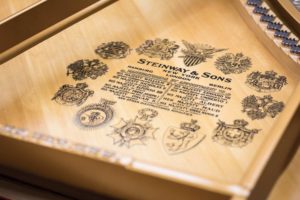
The large soundboard is placed underneath the plate and strings, and is used to amplify the vibrations of the strings. Usually these boards are constructed out of solid spruce wood, however that is not the only material used. We have installed several boards made of out Western Red Cedar; furthermore, companies like Steingraeber are helping to pave the way forward with soundboards made out of carbon fiber. Regardless of the material, the function of the board remains the same, which is to amplify and help project the sound out of the piano. The bridges on top of a soundboard must have the proper string bearing, to allow for the vibrations of the strings to properly resonate to the board. The greater the area of the soundboard, the more sound it is able to project.
The Pinblock:
One of the most important piano parts when it comes to tuning is the pinblock. Near the front of a grand piano you will see hundreds of individual pins, poking through holes in the piano’s iron plate. The pins are not set in the plate however, they are held tightly by a block of laminated wood underneath. The pinblock works with the plate to withstand the immense pressure put upon it by the strings. If a pinblock is of lower quality or is heavily worn, the holes may not hold the pins tightly enough to allow the piano to hold a tune. This is when replacement or repair becomes necessary. The fit between the plate and the pinblock must be good to ensure proper stability. We have actually found several ‘new’ pianos where this was not the case. (Click here to read about our repairs on those instruments.)
The Strings: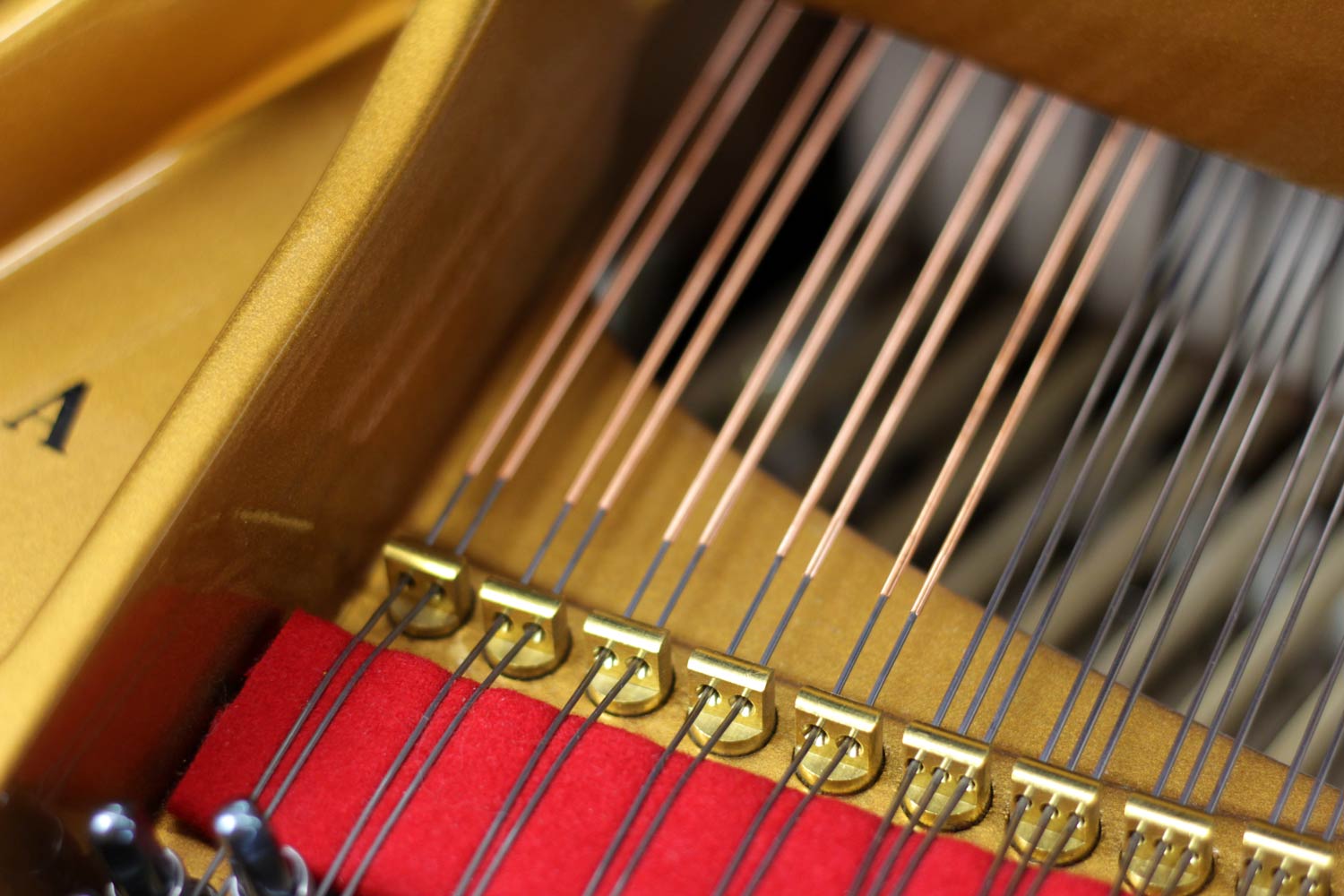
There are over 200 strings on a ‘standard’ grand piano. Made out of tempered high carbon steel, these strings are highly tensile and highly elastic. Strings in the bass section of the piano feature steel cores that are tightly wound with high quality copper wire. Grand piano strings attach to hitch pins near the tail of the piano and the before mentioned tuning pins near the keyboard. Each string must be properly fit, installed and tuned to create the very best tone. Restringing is not a quick process! Making sure that the strings used are of high quality is obviously key.
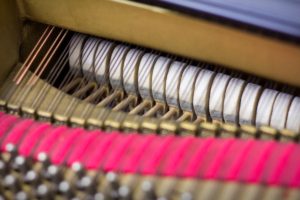 The Action:
The Action:
Almost all of the moving parts in a grand piano are in the piano’s action. The keys are the most visible part, however there is much more hidden from normal view. When a key is pressed, dozens of parts work in unison to allow the hammer to strike the string at the correct speed and location required. The art of action and tone regulation is one of the most critical components of piano rebuilding and technology. If the action is not properly regulated and if the hammers have not been correctly softened or hardened, than the piano simply will not perform at the level it should be. We spend many hours beyond the normal industry standard in action regulation and tone regulation.
Now You Know Your Basic Piano Parts – So What?
These are just the very basics of the inside of a grand piano. There are countless more details that go into each and every section of such a complex and exciting instrument. A grand piano is not just a mechanical marvel; it is a platform on which artists can truly express themselves. Therefore, if you notice any of these parts not operating as they should, be sure and have them repaired and restored by a qualified piano technician and rebuilder. Chupp’s Piano Service is proud to specialize in the restoration of vintage Steinway & Sons grand pianos, and can work with your quality piano no matter the brand. When properly restored, these instruments truly become art you can feel! Click to learn more about this time honed process!
“Make no compromise in quality.” – Henry E. Steinway, Founder of Steinway & Sons
Comments are closed

